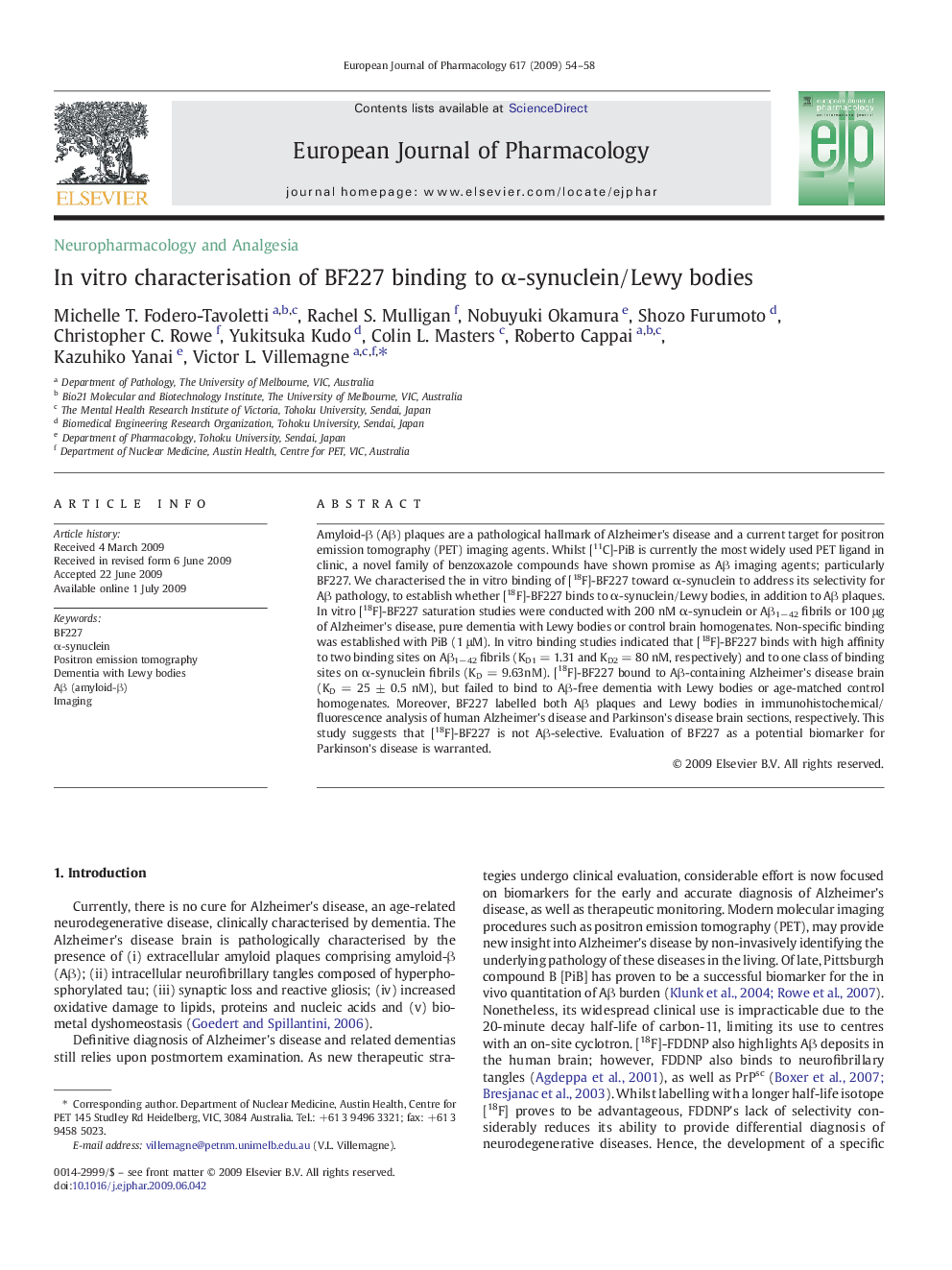| Article ID | Journal | Published Year | Pages | File Type |
|---|---|---|---|---|
| 2534072 | European Journal of Pharmacology | 2009 | 5 Pages |
Amyloid-β (Aβ) plaques are a pathological hallmark of Alzheimer's disease and a current target for positron emission tomography (PET) imaging agents. Whilst [11C]-PiB is currently the most widely used PET ligand in clinic, a novel family of benzoxazole compounds have shown promise as Aβ imaging agents; particularly BF227. We characterised the in vitro binding of [18F]-BF227 toward α-synuclein to address its selectivity for Aβ pathology, to establish whether [18F]-BF227 binds to α-synuclein/Lewy bodies, in addition to Aβ plaques. In vitro [18F]-BF227 saturation studies were conducted with 200 nM α-synuclein or Aβ1−42 fibrils or 100 μg of Alzheimer's disease, pure dementia with Lewy bodies or control brain homogenates. Non-specific binding was established with PiB (1 μM). In vitro binding studies indicated that [18F]-BF227 binds with high affinity to two binding sites on Aβ1−42 fibrils (KD1 = 1.31 and KD2 = 80 nM, respectively) and to one class of binding sites on α-synuclein fibrils (KD = 9.63nM). [18F]-BF227 bound to Aβ-containing Alzheimer's disease brain (KD = 25 ± 0.5 nM), but failed to bind to Aβ-free dementia with Lewy bodies or age-matched control homogenates. Moreover, BF227 labelled both Aβ plaques and Lewy bodies in immunohistochemical/fluorescence analysis of human Alzheimer's disease and Parkinson's disease brain sections, respectively. This study suggests that [18F]-BF227 is not Aβ-selective. Evaluation of BF227 as a potential biomarker for Parkinson's disease is warranted.
